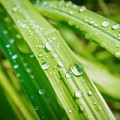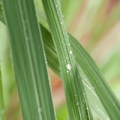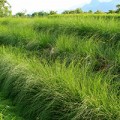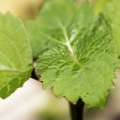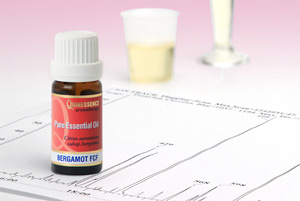Palmarosa Essential oil – Make your skin happy
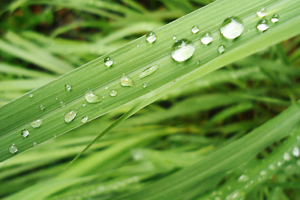 Palmarosa essential oil is obtained from a sweet lemon-scented grass found growing wild throughout India, especially to the North East of Bombay and toward the Himalaya Mountains, Nepal and Pakistan.
Palmarosa essential oil is obtained from a sweet lemon-scented grass found growing wild throughout India, especially to the North East of Bombay and toward the Himalaya Mountains, Nepal and Pakistan.
Palmarosa grass (Cymbopogon martinii var martinii) is native to South East Asia and has been used in medicine and also as an effective insect repellent throughout this region for thousands of years.
It belongs to the Poaceae (Gramineae) plant family, and is very similar in appearance to both lemongrass (Cymbopogon citratus), and citronella (Cymbopogon nardus), which are close relatives of palmarosa. However, despite their similarities all three species produce quite different essential oils with unique chemistry profiles and therapeutic properties.
General description
Palmarosa is a perennial aromatic grass with stiff, upright, yellow or yellow-green stems supported by a small but penetrating root system. When growing wild, the long and narrow-lanceolate leaves of this plant may attain 2.5 to 3.0 metres in height, forming rounded clumps measuring up to a metre across.
The essential oil content in the bright-green leaves varies along its length, with the very highest concentration of essential oil being found in the tops of the leaves. This oil releases a fresh, grassy rose-like aroma when crushed between the fingers. In India, the grass begins to bud during the latter part of August and flowers appear during October. Wild specimens may survive for 10 or 15 years, whereas plants cultivated for the extraction of essential oil remain productive around 6 to 10 years.
Palmarosa essential oil is produced in Africa, Brazil, Comores, Indonesia, Java, Madagascar and the Seychelle islands, although India currently remains the largest single producer.
Traditional uses
In Ayurvedic medicine palmarosa is known as ‘Rohisha’, and both grass and roots are made into a decoction and taken internally to treat bronchitis, coughs and respiratory disorders, colitis, dyspepsia, fevers and jaundice. Externally, palmarosa grass is used in poultices to bring relief to lumbago, neuralgia, rheumatism, sciatica and spasms. The fresh crushed fragrant leaves are also added to bathwater to release the uplifting and intriguing perfume which soothes both tired mind and aching body.
It is unknown when or where the essential oil was first extracted from the plant, but when palmarosa essential oil eventually did reach Europe it was employed for its fragrance and skin enhancing properties in a wide range of soaps and cosmetics, and for many years it was also used as a flavouring in tobacco.
Harvesting and extraction
Indian palmarosa essential oil is mostly derived from wild plants growing in the forest regions, where it is harvested by hand in the traditional way. On the managed plantations harvesting may be conducted by hand or with a modern mechanical system that can cut, chop and load the plant ready for transportation directly to the stills.
The grass is cut around 6 to 9 centimetres from the ground and sometimes allowed to dry in the shade for up to 6 days to reduce its bulk for transportation. Palmarosa essential oil is extracted by hydro or steam distillation which produces a pale straw or olive coloured oil with a distinctive sweet, rosy-floral odour with subtle fruity, spicy and woody nuances. A good quality palmarosa oil is almost a perfume in itself, but the fragrance can be variable from region to region.
Palmarosa essential oil benefits
Palmarosa essential oil is a powerful antimicrobial that can out-perform tea tree as an antifungal, making it perfect to treat athlete’s foot and other stubborn fungal infections. The powerful anti-viral properties of palmarosa could also mean it is your best line of natural defence against coughs and colds, especially when blended with other antiviral oils such as eucalyptus (Eucalyptus globulus) and ravensara (Ravensara aromatica).
Used in skincare, essential oil of palmarosa simply excels at keeping a healthy complexion. It balances sebum production, stimulates cellular regeneration, encourages elasticity, and moisturises dry or mature skin. It also effectively combats acne, dermatitis, eczema and psoriasis. All this, at a fraction of the cost of rose oil!
Used in massage palmarosa essential oil eases the pain associated with arthritis, rheumatism and general muscular aches, as well as cramps and gastric conditions. Due to its calming yet uplifting properties, palmarosa is valuable when treating emotional conditions such as anxiety, nervous exhaustion and stress.
Palmarosa oil is a middle note that blends well with basil, bergamot, cedarwood atlas and virginian, fennel, frankincense, geranium, lavender, lemongrass, linaloe wood, lemon, mandarin, neroli, orange, pine, rose and ylang ylang.
Copyright © Quinessence Aromatherapy Ltd 2013.

